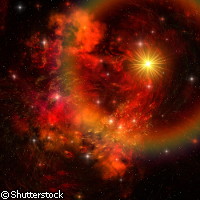How stellar blasts give your bones calcium
An international team of scientists has discovered an exploding star that produces extraordinarily large amounts of calcium that eventually make their way into our bones. The research, partially funded through a Marie Curie International Reintegration Grant (IRG) under the EU's Seventh Framework Programme (FP7), also offers clues on how these calcium-rich stars may represent a new class of supernovae. The findings are published in the journal Nature. The use of robotic telescopes in the last 10 years or so has heightened astronomers' curiosity about exploding stars. In 2005, researchers at the Katzman Automatic Imaging Telescope (KAIT) at the University of California, Berkeley in the US discovered the unique supernova (SN) 2005E, one of eight known 'calcium-rich supernova'. 'With the sheer numbers of supernovae we're detecting, we're discovering weird ones that may represent different physical mechanisms compared with the two well-known types, or may just be variations on the standard themes,' explained Professor Alex Filippenko, Director at KAIT and one of the authors of the study. 'But SN 2005E was a different kind of 'bang'. It and the other calcium-rich supernovae may be a true suborder, not just one of a kind.' According to Professor Filippenko, SN 2005E is distinct from the two main classes of supernovae: Type Ia supernovae result from the violent explosion of a white dwarf star (a remnant of a star that has completed its normal lifecycle); and Type Ib/c or Type II supernovae are categories of stellar explosions generated by the core collapse of massive stars. The latter group leave behind black holes or neutron stars. This latest study, led by Drs Hagai Perets at the Harvard-Smithsonian Center for Astrophysics in the US (CfA) and Avishay Gal-Yam at the Weizmann Institute of Science in Israel, sheds light on how the original star was a low-mass white dwarf that stole helium from another white dwarf until the temperature and pressure ignited a thermonuclear explosion that blew off at least the outer layers of the star and possibly obliterating it completely. 'The donor star is probably completely destroyed in the process, but we're not quite sure about the fate of the thief star,' Dr Gal-Yam said. 'We've never before seen a spectrum like this one,' said co-author Dr Paolo Mazzali of the Max-Planck Institute for Astrophysics in Germany and the Scuola Normale Superiore in Italy. 'It was clear that the unique chemical composition of this explosion held an important key to understanding it.' The team estimated that around 50% of the exploded mass was calcium. They contend that this could explain why the universe and our bodies are so rich in this metallic element. If just a couple of such stellar explosions materialised every century, it would be enough to generate the calcium found in galaxies, like the Milky Way, and in our planet's living creatures. Meanwhile, researchers from Hiroshima University in Japan, presenting their study's findings in the same Nature issue, argue that the SN 2005E's original start was huge and that it experienced the type of collapse seen in a Type II supernova. 'It's a confusing, muddy situation now,' Professor Filippenko said. 'But we hope that, by finding more examples of this subclass and of other unusual supernovae and observing them in greater detail, we will find new variations on the theme and get a better understanding of the physics that's actually going on.' Commenting on the importance such a study, co-author Dae-Sik Moon from the University of Toronto in Canada said: 'The supernova explosion is the most energetic and brilliant event that happens in the universe. It is rich with information, not only about how stars die, but to understanding the origin of life and the expansion of the universe.' Also contributing to this work were scientists from Chile and the UK.
Countries
Canada, Chile, Germany, Italy, United Kingdom, United States



